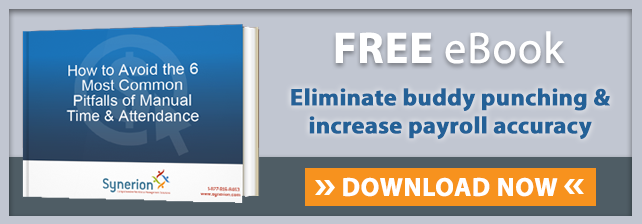.jpg?width=273&name=44783661_s%20(1).jpg) While it’s well known that understaffing can seriously negatively impact your staff morale and your bottom line, the hospitality industry also has to grapple with the negative implications of overstaffing.
While it’s well known that understaffing can seriously negatively impact your staff morale and your bottom line, the hospitality industry also has to grapple with the negative implications of overstaffing.
With fluctuating workloads and variable staffing, achieving and maintaining the perfect balance can be a challenge. These are just five signs that your hospitality business is overstaffed.
You Employ More than Your Competitors
A market analysis is an easy project that a surprising amount of businesses simply don’t perform. While there are variations within the same sector and even the same location, for the most part, failing to fall in line with your competitors can be an indicator of overstaffing. Look around your local region to determine how others staff throughout the year. You may find that your competition rely more on seasonal employees or restrict their full-time staff. These stark differences with your own staffing may alert you to the fact you’ve been overstaffing.
You Struggle with Retention
When most businesses experience retention issues, they often look at management and pay scale but a poor retention rate can also result from overstaffing. When employees are bored and constantly looking for additional work to fill their days, they often start looking for a more fulfilling career. Keep your ears open to employee complaints, particular regarding workload. If managers report employees consistently asking for additional projects or duties, it may be time to consider whether you’re overstaffed.
There’s No Teamwork Between Departments
Overstaffing isn’t just the result of too many employees. It can also be the right amount of employees in the wrong place. Workflow isn’t the same as an office job in the hospitality business. While front desk personnel may be slammed in the evening, housekeeping is often struggling to keep pace on Friday through Sunday. If your employees are kept in their department regardless of workload, you probably have overstaffing in one area and understaffing in another. Creating a system that allows employees to move between departments to accommodate workload is essential in preventing overstaffing.
Your Metrics Are Slipping
If you’re using a workforce management system, you already have the tools in place to analyze business data and create positive changes in your workplace. Metrics are just one way of measuring not only staff but workload to determine the best way to grow your hospitality business. One indicator that you may be overstaffed is when you find an ongoing decline in meeting and exceeding those metrics. When metrics are slipping, take a look around to see whether overstaffing is contributing to a reduction in profits or productivity.
Your Schedule is Stagnant
Hospitality is rarely a year-long affair. Depending on location, you may see the peak of guests during the summer, winter, or fall but rest assured that there are some months that are naturally busier than others. If your schedule doesn’t reflect the natural ebb and flow of guests, you are probably overstaffing at least part of the year. Understanding your workflow needs, not just annually but monthly, weekly, and even daily can help you maintain the necessary amount of staff without overstaffing. Take a look at your current scheduling practices and determine whether you are truly meeting workflow needs or are simply staffing the same no matter the season.
Overstaffing can be just as destructive to a business as understaffing in terms of morale and your company’s bottom line. Identifying the signs of overstaffing is the first step towards preventing it. By monitoring scheduling, workplace metrics, retention, employee retention, and your competition, you can eliminate waste and cultivate a more productive workplace.
